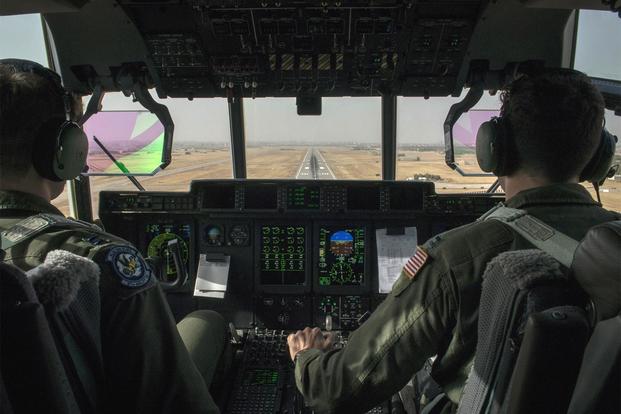Despite high hopes for a program aimed at retaining full-time pilots, there are only two airmen currently utilizing Air Mobility Command's Aviator Technical Track (ATT), also known as the "fly-only" track. There are no plans to expand the program any further, the command's top general said Thursday.
"Right now, we're not going to accept any more folks into the program," Gen. Maryanne Miller said in a telephone interview with Military.com. "We don't plan to scale it, and we don't plan to expand it."
The experimental program, launched in 2018, was initiated under Miller's predecessor, Gen. Carlton Everhart II, in hopes of keeping active-duty mobility pilots in cockpits longer without assigning them additional, non-flight-related duties. The goal was to give majors and majors-select the ability to stay in one job for five years in an effort to provide a better work-life balance.
Officials surveyed airmen on why the program didn't take. Some pilots said it was lack of interest; others said they were apprehensive about being the "first" to attempt the experiment. AMC received only a handful of applicants and selected two 11M (mobility) Air Force Specialty Code pilots for the program, the general said.
Related: Air Force Misses New Pilot Goal Again as Service Pushes to Revolutionize Training
"There was really no interest beyond that," Miller said.
Since the program was experimental, "there is no finite end date to these pilots' participation in the program," added Capt. Nicole Ferrara, AMC spokeswoman, in an email. "They'll simply be considered for future assignments and opportunities alongside their cohorts who were not in the ATT program. In other words, if they want to pursue command or leadership opportunities, they can do that at any time."
The news comes following the Air Force’s announcement that it will fall short in its year-end goal of having 1,480 pilots across the force by the end of fiscal 2020; it also missed its goal in fiscal 2019. However, the service could not provide a breakdown of which pilot communities -- such as mobility or fighter -- are experiencing manning gaps.
AMC officials said they're using three other tools to retain mobility airmen: the squadron deployment model; squadron administrative support contract; and the readiness-driven allocation process, or RDAP.
The efforts are part of Air Force Chief of Staff Gen. David Goldfein's "revitalizing the squadron" initiative, which he spearheaded when taking his post in 2016.
While official statistics could not be provided by press time, AMC said that the squadron deployment model has shown promise and officials anticipate similar outcomes for the other two. The squadron administrative support contract and deployment model are not unique to the command.
The squadron deployment model stresses unit cohesion by deploying an entire unit together instead of taking a few people at a time for months-long rotations. The technique was popular prior to 9/11 but, following the ramp up in forces in the Middle East, the Air Force switched to deploying a handful of airmen from squadrons at a time to avoid burnout. Currently, all AMC active-duty C-130 Hercules squadrons are operating under the squadron deployment model, Ferrara said.
"The first C-130J deployment under this model began in September of 2019," she said, with members of one squadron deploying to two locations. AMC also began using the model for KC-135 Stratotanker units in August 2019, officials added. There is no plan for KC-10 Extender squadrons to implement the strategy.
In August 2016, the service began removing miscellaneous responsibilities known as "additional duties" typically assigned to airmen at the unit level. Beginning this summer, AMC will implement the squadron administrative support contract, which will add four administrative personnel per flying squadron to take care of bureaucratic work that airmen have taken up over the years.
Lastly, RDAP, which began rolling out in October, was being used by all units as of January, said Col. Damien Pickart, another AMC spokesman.
The model looks at when pilots and aircrew may be busiest during the year to decide when it's most appropriate to schedule their training, he explained, adding that it allows for additional training time pilots and aircrew may need.
"It's about ensuring adequate training opportunities exist in the unit," Pickart said. The initiative was driven largely by pilot feedback; airmen expressed concern there were inadequate opportunities to complete their semi-annual training requirements.
"It's giving them greater predictability as to when they're going to get their training complete," Pickart said.
Together, the three programs aim to give aviators greater stability.
"They are so proving to be successful," Pickart said. "They're helping with morale, and they're helping with our retention challenges."
-- Oriana Pawlyk can be reached at oriana.pawlyk@military.com. Follow her on Twitter at @Oriana0214.
Read more: White House Nominates Nation's 1st African American Military Service Chief













